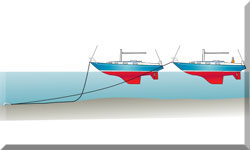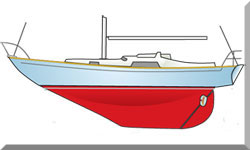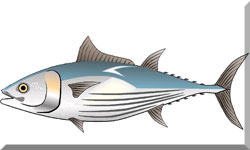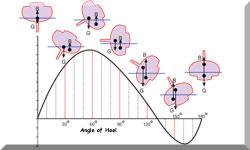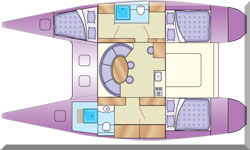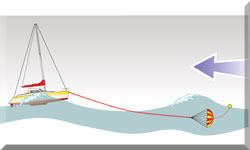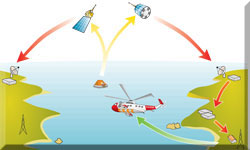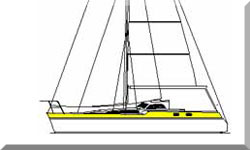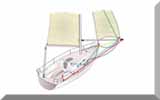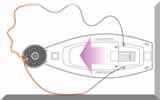- Home
- Electronics & Instrumentation
- Correct VHF Radio Procedure
Correct VHF Radio Procedure: Your Questions Answered
Correct VHF radio procedure boils down to clear communication, using the right channels for the right purpose, and adhering to established etiquette to ensure everyone can use the radio effectively and safely. It's about being a responsible user of a shared resource, especially when it comes to safety.
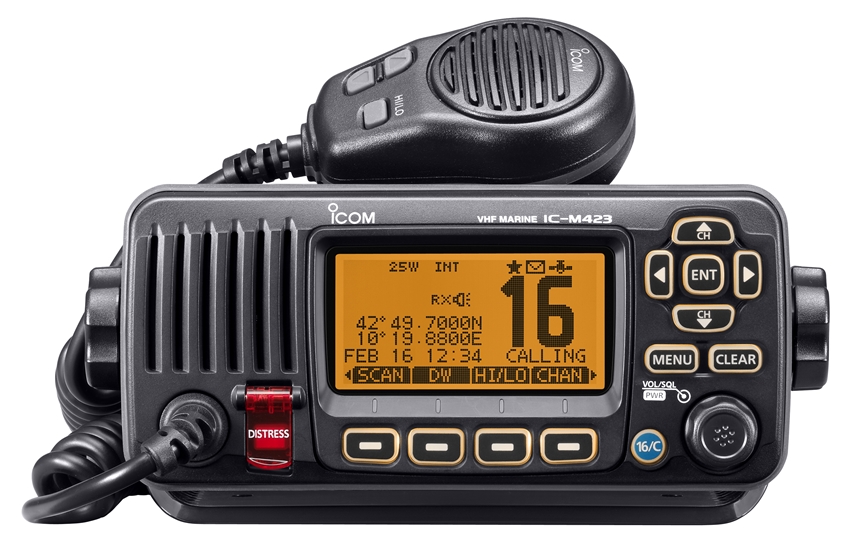 Channel 16 is the primary channel for distress (MAYDAY) calls.
Channel 16 is the primary channel for distress (MAYDAY) calls.What channel should I keep my VHF radio on?
What channel should I keep my VHF radio on?
If you have a VHF radio on your vessel it should be turned on and, if it's not being used to talk to someone else, you are generally expected to keep a listening watch on Channel 16.
Here's why:
- Distress Calls: Channel 16 is the primary channel for distress calls (Mayday). By monitoring it, you can hear if another vessel is in immediate danger and potentially offer assistance or relay their call to the Coastguard.
- Urgency and Safety Messages: Important safety information like navigation warnings and urgent weather broadcasts are often announced on Channel 16 before being moved to a working channel.
- Calling Channel: While you should switch to a working channel for conversations, Channel 16 is still used to make initial contact with other vessels or shore stations if you don't know their preferred working channel.
While it might not be a strict legal requirement for all recreational boaters in every single circumstance, it's considered a fundamental aspect of good seamanship and responsible radio use. Think of it as being part of a community looking out for each other on the water.
Which channel should we use for contacting marinas and harbours?
Which channel should we use for contacting marinas and harbours?
Typically, marinas and harbour control often monitor and prefer to be contacted on Channel 16 or a designated working channel advertised in local pilot books, harbour guides, or on their website. Some may also use Channel 68 or Channel 09 (in the US) for routine communication.
It's best practice to listen briefly on Channel 16 and then switch to the designated working channel as instructed or as commonly used in that specific location. Check local signage or publications for preferred channels.
Is it appropriate to use Channel 16 for a non-urgent call to another recreational vessel?
Is it appropriate to use Channel 16 for a non-urgent call to another recreational vessel?
No, Channel 16 is strictly for distress, urgency, and safety calls. For non-urgent, routine communication between recreational vessels, you should use a designated working channel.
Common working channels include Channel 68, 69, 71, or 78A (in the US). After an initial contact on Channel 16 (if necessary to establish contact), both vessels should immediately agree to switch to a working channel.
What are the designated simplex and duplex channels, and when should each be used?
What are the designated simplex and duplex channels, and when should each be used?
Simplex channels allow communication on a single frequency; both transmitting and receiving occur on the same frequency. These are typically used for ship-to-ship and ship-to-shore (non-commercial) communication.
Examples include Channel 16, 68, 69, 71, and 78A. Duplex channels use two different frequencies for communication, allowing simultaneous transmission and reception, similar to a telephone. These are primarily used for ship-to-shore commercial communication, such as with coast stations or marine operators.
They are usually indicated with a "+" sign after the channel number (e.g., Channel 22A). Recreational boaters generally use simplex channels.
How do we switch between high and low power settings, and when is each appropriate?
How do we switch between high and low power settings, and when is each appropriate?
Most VHF radios have a HI/LO power button. Low power (typically 1 Watt) should be used for short-range communication when the receiving station is nearby and clearly audible. This conserves battery power and reduces the potential for interfering with distant transmissions.
High power (typically 25 Watts) should be used when trying to reach a distant station, in situations of marginal reception, or when making distress, urgency, or safety calls where maximizing the broadcast range is crucial.
Always start with low power and switch to high power only if necessary.
What is the procedure for monitoring Channel 16 and another working channel simultaneously (dual watch/scanning)?
What is the procedure for monitoring Channel 16 and another working channel simultaneously (dual watch/scanning)?
Most modern VHF radios have a Dual Watch (DW) or Tri-Watch (TW) function. Dual Watch (DW) allows you to monitor Channel 16 and one other selected channel simultaneously. The radio will briefly switch between the two channels, prioritizing any incoming transmissions.
Tri-Watch (TW) monitors Channel 16, Channel 9 (in the US), and one other selected channel. To activate these functions, consult your radio's manual.
Typically, you select the second channel you want to monitor and then press the DW or TW button. The radio's display will usually indicate that the function is active.
What is the correct protocol for performing a radio check with a shore station or another vessel?
What is the correct protocol for performing a radio check with a shore station or another vessel?
Select a low-power working channel (not Channel 16). Call the intended recipient:
"[Recipient's call sign or name], [Your vessel's call sign or name], radio check please, over." (e.g., "Sea Tow Boston, Sailing Vessel Serenity, radio check please, over.")
Wait for a response. If a station responds, they will typically say, "Serenity, this is Sea Tow Boston, go ahead."
Give your radio check: "Sea Tow Boston, this is Sailing Vessel Serenity, testing. How do you read me? Over."
The responding station should reply with a signal strength report: "Loud and clear," "Good signal," "Weak signal," "Fading signal," or "Unreadable."
Acknowledge the report: "Roger, thank you for the radio check, [Recipient's call sign or name], Out."
How often should we conduct a radio check?
How often should we conduct a radio check?
It's good practice to perform a radio check before departing on a voyage, especially after any maintenance or if you haven't used the radio recently. You might also consider a brief check at the start of each day or leg of a longer journey to ensure the radio is functioning correctly. Avoid frequent, unnecessary radio checks that can clutter the airwaves.
What information should be included in a radio check transmission?
What information should be included in a radio check transmission?
As outlined previously, a radio check transmission should include the call sign or name of the intended recipient, your vessel's call sign or name, and the phrase "radio check." When responding to a radio check request, provide a clear signal strength report.
What are acceptable responses to a radio check?
What are acceptable responses to a radio check?
Acceptable responses to a radio check should provide a clear indication of the received signal strength. Common responses include "Loud and clear," "Good signal," "Weak but readable," "Weak and unreadable," "Fading," or "Unreadable." The responding station should also identify themselves (e.g., "Sailing Vessel Serenity, this is Sea Tow Boston").
What is the proper way to address another vessel or shore station on the VHF?
What is the proper way to address another vessel or shore station on the VHF?
Begin with the call sign or name of the station you are calling, repeated three times. Follow with the proword "This is". State your vessel's call sign or name, repeated three times. Then, briefly state the reason for your call. End with "Over" to indicate you have finished speaking and are awaiting a response.
Example: "KUS4567, KUS4567, KUS4567, This is Sailing Vessel Blue Moon, Sailing Vessel Blue Moon, Sailing Vessel Blue Moon, requesting a dock assignment, Over."
How do we use the phonetic alphabet correctly?
How do we use the phonetic alphabet correctly?
Use the phonetic alphabet to spell out letters and numbers that might be unclear due to static or poor reception, especially call signs.
Say the proword "Spell" before using the phonetic alphabet.
Speak each phonetic word clearly and distinctly.
Common phonetic alphabet: Alpha, Bravo, Charlie, Delta, Echo, Foxtrot, Golf, Hotel, India, Juliet, Kilo, Lima, Mike, November, Oscar, Papa, Quebec, Romeo, Sierra, Tango, Uniform, Victor, Whiskey, X-ray, Yankee, Zulu. For numbers, say each digit individually (e.g., "one," "two," "three").
Example: "Call sign is Kilo Uniform Sierra Four Five Six Seven, Over."
What are common prowords and their meanings (e.g., 'Over,' 'Out,' 'Roger,' 'Wilco')?
What are common prowords and their meanings (e.g., 'Over,' 'Out,' 'Roger,' 'Wilco')?
- "Over" means my transmission is ended, and I expect a response from you.
- "Out" means my transmission is ended, and no response is required or expected. I am now signing off.
- "Roger" means I have received your transmission satisfactorily. Wilco means I have received your instructions and will comply.
- "Standby" means please wait; I will call you shortly.
- "Go Ahead" means proceed with your transmission.
- "Say Again" means please repeat your last transmission.
- "Correction" means an error has been made in this transmission. The correct version follows. "Affirmative" means yes. "Negative" means no.
- "Mayday" is a distress call indicating imminent and grave danger to a vessel or persons.
- "Pan Pan" is an urgency call indicating an urgent situation concerning the safety of a person or vessel, but there is no immediate danger.
- "Sécurité" is a safety call announcing a hazard to navigation or important safety information.
How can we ensure our transmissions are clear and concise, especially in noisy environments?
How can we ensure our transmissions are clear and concise, especially in noisy environments?
Speak slowly and clearly. Hold the microphone a few inches from your mouth. Speak directly into the microphone. Use prowords correctly. Keep your message brief and to the point. Think about what you want to say before transmitting. If there is significant background noise on your vessel, try to move to a quieter location or shield the microphone if possible.
If you are having trouble understanding the other station, ask them to "say again" or "speak slower."
What is the procedure if we cannot clearly hear the other station?
What is the procedure if we cannot clearly hear the other station?
Ask them to repeat their transmission using the proword "Say Again". If only part of the message is unclear, ask them to "Say Again all before..." or "Say Again all after..." the part you understood.
You can also ask them to "Spell" out words or numbers that are unclear using the phonetic alphabet. If the signal is very weak, you might need to ask them to switch to high power if they are on low power. Consider if your antenna or connections might be the issue.
How do we program our radio with our MMSI number?
How do we program our radio with our MMSI number?
The procedure for programming your MMSI (Maritime Mobile Service Identity) number varies depending on the make and model of your VHF radio. Consult your radio's user manual for specific instructions. Typically, it involves accessing the radio's menu system and entering the nine-digit MMSI number.
Important: The MMSI number is usually programmed only once and is often locked to the radio. Ensure you enter it correctly. If you make a mistake, you may need to contact the dealer or manufacturer to reset it.
When is it appropriate to use DSC for routine calls versus voice?
When is it appropriate to use DSC for routine calls versus voice?
DSC (Digital Selective Calling) is primarily intended for safety-related communications, including distress, urgency, and safety alerts. For routine, non-urgent calls to other vessels or shore stations, voice communication on a working channel is still the standard practice.
DSC can be useful for initiating a voice call, especially if you know the other vessel's MMSI. You can send a DSC individual call to their MMSI, which will alert them to switch to a pre-agreed voice channel (often indicated in the DSC setup). This can be more efficient than hailing on Channel 16 in some situations.
How do we send a DSC individual call to another vessel?
How do we send a DSC individual call to another vessel?
You need to know the MMSI number of the vessel you wish to call. On your DSC-equipped radio, navigate to the menu option for "Individual Call" or similar. Enter the nine-digit MMSI number of the receiving vessel. Select the desired voice channel for subsequent communication (e.g., Channel 68). Transmit the DSC call. The receiving vessel's radio will sound an alert and display your MMSI and the requested channel. They should then acknowledge the call and switch to the indicated voice channel to communicate.
What is the procedure for acknowledging a DSC call?
What is the procedure for acknowledging a DSC call?
When your DSC radio receives an individual call, it will sound an alarm and display the caller's MMSI and the requested voice channel. Press the "Accept Call" or similar button on your radio. This will send an acknowledgement back to the calling vessel. Then, manually switch your radio to the indicated voice channel to begin voice communication.
How do we use the DSC position polling feature?
How do we use the DSC position polling feature?
Position polling allows you to request the current GPS position of another DSC-equipped vessel, provided they have agreed to allow polling. To use this feature, you need the MMSI number of the vessel you want to poll. Navigate to the "Position Polling" or similar menu option on your radio. Enter the MMSI of the target vessel. Send the poll request.
If the other vessel's radio is set to allow polling and has a GPS fix, it will automatically respond with its current latitude and longitude, which will be displayed on your radio. This feature can be useful for tracking the location of other vessels in your group.
What is the exact format and information required for a Mayday call?
What is the exact format and information required for a Mayday call?
Tune your radio to Channel 16 (or the distress frequency in your area). If you have time, press the DSC distress button. This sends your MMSI and potentially your position automatically. Then, clearly and slowly speak the following:
"MAYDAY, MAYDAY, MAYDAY," "THIS IS," your vessel's name (spoken three times), your vessel's call sign or MMSI number (spoken once), "MAYDAY," your vessel's position (latitude and longitude or bearing and distance from a known landmark). Be as precise as possible. The nature of the distress (e.g., "vessel sinking," "fire on board," "medical emergency"). The number of people on board. Any assistance required. Any other pertinent information (e.g., type of vessel, any injuries, life raft deployed). "OVER."
Example: "MAYDAY, MAYDAY, MAYDAY, THIS IS Sailing Vessel Serenity, Sailing Vessel Serenity, Sailing Vessel Serenity, KUS4567, MAYDAY, Position is 42 degrees 30 minutes North, 070 degrees 15 minutes West, taking on water rapidly, three persons on board, require immediate assistance, OVER."
When is it appropriate to transmit a Mayday call?
When is it appropriate to transmit a Mayday call?
A Mayday call should ONLY be transmitted when your vessel or a person on board is facing imminent and grave danger and requires immediate assistance. This includes situations such as sinking or in imminent danger of sinking, fire on board that cannot be controlled, a person overboard in a life-threatening situation, a serious medical emergency requiring immediate evacuation, or any other situation where there is a high probability of loss of life or the vessel.
What actions should we take immediately after sending a Mayday?
What actions should we take immediately after sending a Mayday?
Keep your radio turned on and monitor Channel 16. Be prepared to answer any calls from rescue authorities or other vessels. If possible, activate any emergency signalling devices (EPIRB, flares, etc.). Note the time of your Mayday call and any responses. If your situation changes, update the responding authorities.
How do we cancel a false Mayday alert?
How do we cancel a false Mayday alert?
If you accidentally transmit a Mayday, it is crucial to cancel it immediately to avoid unnecessary search and rescue efforts. Tune your radio to Channel 16. Transmit the following message clearly: "MAYDAY, MAYDAY, MAYDAY," "THIS IS," your vessel's name (spoken three times), your vessel's call sign or MMSI number (spoken once), "CANCEL MY MAYDAY," explain briefly how the false alert occurred, "OVER." Example: "MAYDAY, MAYDAY, MAYDAY, THIS IS Sailing Vessel Blue Moon, Sailing Vessel Blue Moon, Sailing Vessel Blue Moon, KUS1234, CANCEL MY MAYDAY, False alert transmitted due to accidental button press, OVER."
If you sent a DSC distress alert, you should also send a DSC cancellation message if your radio has that function. Consult your radio's manual.
What is the difference between a Mayday, Pan Pan, and Sécurité call?
What is the difference between a Mayday, Pan Pan, and Sécurité call?
Mayday indicates distress - imminent and grave danger to a vessel or persons requiring immediate assistance.
Pan Pan (pronounced "Pahn Pahn") indicates urgency - a situation concerning the safety of a person or vessel, but there is no immediate danger to life or the vessel itself. Examples include a disabled vessel drifting but not in immediate danger, or a person with a non-life-threatening medical issue.
Sécurité (pronounced "Say-cure-it-tay") indicates a safety announcement - used to broadcast information about a hazard to navigation, such as a floating object, a navigational aid that is out of service, or severe weather warnings.
What situations warrant a Pan Pan call?
What situations warrant a Pan Pan call?
Situations that warrant a Pan Pan call include engine failure leaving a vessel adrift but not in immediate danger, a minor injury or illness that requires assistance but is not life-threatening, loss of steering, or a vessel experiencing heavy weather but not in imminent danger.
The key difference from a Mayday is the lack of immediate threat to life or the vessel. The format for a Pan Pan call is similar to a Mayday, but you say "PAN PAN, PAN PAN, PAN PAN" instead of "MAYDAY."
What information should be included in a Pan Pan call?
What information should be included in a Pan Pan call?
A Pan Pan call should include "PAN PAN, PAN PAN, PAN PAN," followed by "THIS IS," your vessel's name (three times), your call sign or MMSI, your position, the nature of the urgency, the number of people on board, the assistance required, and any other relevant information, ending with "OVER."
When should we transmit a Sécurité call?
When should we transmit a Sécurité call?
A Sécurité call should be transmitted on Channel 16 (or the local safety channel) to warn other mariners of a hazard to navigation or to broadcast important safety information. The format is "SÉCURITÉ, SÉCURITÉ, SÉCURITÉ," followed by "THIS IS," your vessel's name (once), your call sign or MMSI (once), and then a clear and concise description of the hazard or safety information, including its location if applicable. End with "OVER."
What type of information is typically relayed in a Sécurité call (e.g., navigation hazards, weather warnings)?
What type of information is typically relayed in a Sécurité call (e.g., navigation hazards, weather warnings)?
Sécurité calls typically relay information about floating debris or other obstructions to navigation, navigational aids that are not functioning correctly, severe weather warnings that might not have been widely broadcast yet, or any other information that could affect the safety of other vessels in the area.
What is our responsibility if we hear a Mayday call?
What is our responsibility if we hear a Mayday call?
If you hear a Mayday call, you should immediately stop transmitting on that channel to avoid interfering with distress communications. Listen carefully to gather as much information as possible about the vessel in distress, including their position, the nature of their emergency, and the assistance they require.
If you are in a position to help and the Coast Guard or other authorities have not yet responded or are requesting assistance, you should acknowledge the Mayday call and indicate your intentions.
If you are not in a position to help, continue to monitor the channel in case your assistance becomes necessary.
How do we acknowledge a Mayday relay?
How do we acknowledge a Mayday relay?
To acknowledge a Mayday relay, if you are relaying the distress call on behalf of another vessel, you would say "MAYDAY RELAY, MAYDAY RELAY, MAYDAY RELAY," followed by "THIS IS," your vessel's name and call sign, and then repeat the original Mayday message.
If you are responding to a Mayday call directly from a vessel in distress, simply acknowledge their call with your vessel's name and call sign and state that you have received their Mayday and are responding or standing by.
What information should we try to gather from a vessel in distress?
What information should we try to gather from a vessel in distress?
When responding to a vessel in distress, try to gather information such as their exact position (if not clearly stated), the nature of their emergency in more detail, the number of people on board, whether there are any injuries, what type of assistance they need, and any other information that might be helpful to rescuers (e.g., the vessel's description, colour of hull, etc.).
How can we troubleshoot poor VHF radio range?
How can we troubleshoot poor VHF radio range?
To troubleshoot poor VHF radio range, first check your antenna and connections for any signs of damage, corrosion, or loose connections.
Ensure the antenna cable is properly connected to both the radio and the antenna base.
Check the SWR (Standing Wave Ratio) of your antenna system if you have the equipment; a high SWR indicates a problem with the antenna or cable.
Make sure your antenna is mounted as high as possible and is not obstructed by other equipment or parts of the boat.
Verify that your radio is set to the appropriate power level (high power for longer distances).
If using a handheld radio, ensure it has a fully charged battery and that the antenna is securely attached.
If the problem persists, consider having your radio and antenna system professionally inspected.
Are there any maintenance tasks we should perform on our VHF antenna and connections?
Are there any maintenance tasks we should perform on our VHF antenna and connections?
Maintenance tasks for your VHF antenna and connections include regularly inspecting the antenna for any physical damage (cracks, bends).
Check the antenna cable for any kinks, cuts, or signs of wear.
Ensure all connections are tight and free from corrosion; clean them with a wire brush and apply a corrosion inhibitor if necessary.
Periodically check the antenna base for any signs of movement or damage.
Does the height of the antenna significantly impact range?
Does the height of the antenna significantly impact range?
Yes, the height of the antenna significantly impacts VHF radio range. VHF signals travel primarily in a straight line (line of sight). The higher your antenna is mounted, the farther the horizon (and thus your potential transmission and reception range) will be.
Mounting the antenna on the masthead of a sailboat provides a significant advantage in range compared to mounting it lower on the boat.
What is the typical power consumption of our VHF radio?
What is the typical power consumption of our VHF radio?
The typical power consumption of a VHF radio varies depending on whether it's transmitting or receiving and the power level used for transmission. In standby or receiving mode, the current draw is usually quite low (often less than 0.5 amps).
When transmitting on low power (1 Watt), the current draw might be around 1-2 amps, while transmitting on high power (25 Watts) can draw significantly more, typically in the range of 5-7 amps or more. Consult your radio's specifications for precise figures.
How can we ensure the radio has a reliable power source, especially in an emergency?
How can we ensure the radio has a reliable power source, especially in an emergency?
To ensure the radio has a reliable power source, especially in an emergency, it's essential to have it wired directly to your boat's main battery bank with appropriately sized wiring and a dedicated fuse.
Consider having a separate, fully charged handheld VHF radio with its own power source as a backup in case of a failure of the primary system.
Ensure your boat's batteries are well-maintained and fully charged, and consider having a charging system that can replenish the batteries while underway.
What are the advantages and disadvantages of using a handheld VHF radio as a primary or secondary communication device?
What are the advantages and disadvantages of using a handheld VHF radio as a primary or secondary communication device?
Advantages of a handheld VHF radio include its portability, allowing communication away from the boat (e.g., in a dinghy or on shore). It serves as an excellent backup in case of failure of the fixed VHF system. Some handhelds are waterproof and buoyant.
Disadvantages include generally lower power output and therefore shorter range compared to a fixed radio with an external antenna. Battery life can also be a limitation, especially during extended use or emergencies.
Using a handheld as a primary radio on a larger sailboat is generally not recommended due to the range limitations.
What is the expected range of our handheld radio?
What is the expected range of our handheld radio?
The expected range of a handheld VHF radio is highly variable and depends on factors such as the antenna height of both the transmitting and receiving stations, the power output of the handheld (typically 1-6 Watts), and any obstructions or atmospheric conditions.
In ideal conditions (e.g., both stations on relatively high ground with no obstructions), a handheld might achieve a range of several nautical miles (5-10 or more). However, from a sailboat at sea to another vessel or a shore station with a higher antenna, the range might be better.
Expect significantly reduced range when communicating with another low-lying vessel or in areas with obstructions.
How do we interface our VHF radio with our GPS for DSC position reporting?
How do we interface our VHF radio with our GPS for DSC position reporting?
Interfacing your VHF radio with your GPS typically involves connecting the NMEA 0183 or NMEA 2000 output from your GPS unit to the corresponding input terminals on your VHF radio. The specific wiring and configuration will depend on the make and model of both devices.
Consult the user manuals for both your VHF radio and GPS unit for detailed wiring diagrams and setup instructions. Once properly connected, the VHF radio will be able to automatically include your vessel's position in DSC distress alerts and may also display your position.
Can our VHF radio receive AIS signals?
Can our VHF radio receive AIS signals?
Standard analogue VHF radios cannot receive AIS (Automatic Identification System) signals. AIS requires a dedicated receiver, which may be a standalone unit or integrated into some newer VHF radios or chartplotters. If your VHF radio has AIS receiving capabilities, it will typically have a dedicated display or interface with your chartplotter to show AIS targets. Check your radio's specifications to determine if it includes an AIS receiver.
Does each crew member need a license to operate the VHF radio?
Does each crew member need a license to operate the VHF radio?
In many countries, including the UK, while the vessel requires a radio license, not every crew member needs an individual operator's license, provided there is at least one person on board holding the appropriate qualification (like the SRC) who is responsible for its operation.
However, it is highly recommended that multiple crew members are trained and licensed to operate the radio, especially for safety reasons in case the primary operator becomes incapacitated. Check the specific regulations of the relevant maritime authorities.
Are there any channels that are restricted or have specific usage rules inthe UK?
Are there any channels that are restricted or have specific usage rules inthe UK?
In the UK, as in most maritime areas, Channel 16 is strictly reserved for distress, urgency, and safety calls. Certain channels are designated for specific purposes, such as port operations (VTS), pilot vessels, or recreational use. It's essential to be aware of these designations, which are often published in local charts, pilot books, and by maritime authorities.
For routine communication with other recreational vessels in the UK, channels like M1, M2, P1, P2 (private pleasure craft channels) are often used in addition to the international working channels. Always refer to the latest official channel allocation tables for the UK.
When and where is ATIS (Automatic Transmitter Identification System) required?
When and where is ATIS (Automatic Transmitter Identification System) required?
ATIS (Automatic Transmitter Identification System) is a system used in some European inland waterways to automatically identify vessels. In the UK, ATIS is primarily relevant for vessels navigating inland waterways connected to the European network.
For coastal sailing around the majority of UK coastal waters, ATIS is generally not required for recreational vessels. However, if you plan to navigate inland waterways in Europe, you will likely need to program your VHF radio with an ATIS code and ensure it is enabled when operating on those waterways.
How do we program our ATIS code?
How do we program our ATIS code?
The procedure for programming your ATIS code into your VHF radio varies depending on the make and model. Typically, it involves accessing the radio's setup menu and entering the unique ATIS code assigned to your vessel. This code is usually obtained when registering for ATIS use with the relevant authorities in the countries where it is required.
Consult your radio's user manual for specific instructions on how to enter and enable the ATIS function. Ensure you have the correct ATIS code before attempting to program it.
What are the advantages of having a VHF radio with integrated GPS?
What are the advantages of having a VHF radio with integrated GPS?
Having a VHF radio with integrated GPS offers several advantages, particularly for safety. In a DSC distress situation, the radio can automatically transmit your vessel's precise location along with your MMSI, significantly speeding up the response of search and rescue authorities. It can also enable features like DSC position polling, allowing you to see the location of other vessels.
Some radios with integrated GPS can also display your own position and act as a basic GPS receiver in an emergency. This integration simplifies installation as you don't need a separate GPS connection for DSC functionality.
Recent Articles
-
Is Marine SSB Still Used?
Apr 15, 25 02:05 PM
You'll find the answer to this and other marine SSB-related questions right here... -
Is An SSB Marine Radio Installation Worth Having on Your Sailboat?
Apr 14, 25 02:31 PM
SSB marine radio is expensive to buy and install, but remains the bluewater sailors' favourite means of long-range communication, and here's why -
Correct VHF Radio Procedure: Your Questions Answered
Apr 14, 25 08:37 AM
Got a question about correct VHF radio procedure? Odds are you'll find your answer here...

